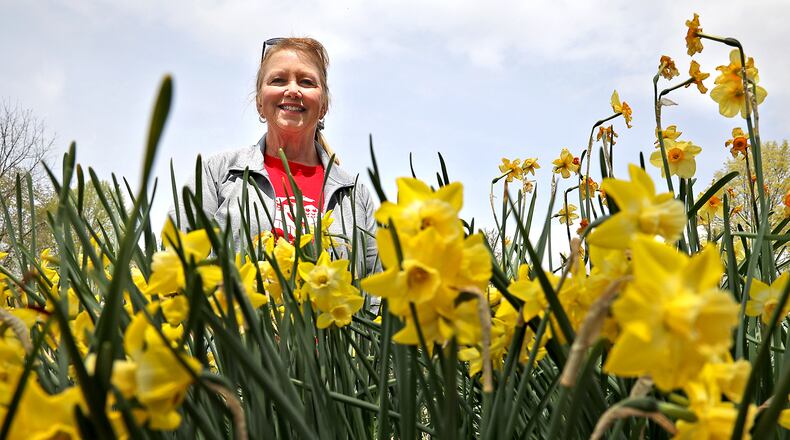Deb Brugger, president-elect of the Volunteers, promises a garden center variety of offerings for everyone “from the vegetable gardener, to the herb gardener and, of course, the flower gardener.”
She also promises that proceeds from the sale will be plowed back into one of the “so many projects we have going on right now” – each, she adds, with “a monster price tag.”
The Snyder Park Gardens and Arboretum is a cooperative effort with the National Trail Parks and Recreation District to develop the grounds of the former Snyder Park Golf Course in a way that benefits the community.
Kathy McConkey, recently retired after 20 years with the Ohio University Extension of Clark County, said a fair translation of the Master Gardener of Clark County Mission Statement is this: “We want to teach people how to garden and have fun doing it.”
In the seven years since it began, the project has established three gardens that serve the dual purpose of putting the grounds to good use and encouraging others to do the same with whatever ground they work:
- The Early Ohio Settlers Garden grows plants that would have been grown by settlers in the first half of the 19th century and shows what a current-day kitchen garden might look like.
- The Garden of Eatin’ is a modern day Victory Garden, but one aimed not only at producing edibles but elevating tastes in garden design. An okra with unusual color might show up near a plant with a variegated leaf and a striped fruit, all protected with fencing designed to keep a groundhog out.
- A separate Victory Garden is designed to maximize vegetable production and to provide produce to the Second Harvest Foodbank of Clark, Champaign and Logan Counties. It participates in friendly competitions with the Grace Lutheran Church garden and others striving to improve the community’s access to healthful food.
Soon to come, said McConkey will be the “brand, spanking new” Springfield Foundation Feature Garden, a set of six beds to be planted this spring.
“Our goal is to have four-season interest,” she said. “We are going to do a mixed bed of evergreen, woody ornamentals, annuals and perennials. We pray it will be beautiful, because we’ve done a lot of work” developing it.
That garden will be located near the recently finished Wingert-Tossey Pavilion, a grand gazebo named for the donors. The structure harkens to those built in the early days of Snyder Park and will serve as a landmark that doubles as a natural gathering point.
The Springfield Foundation grant for its garden will fund the installation of 10-foot-wide sidewalks that radiate from the pavilion to provide garden access to wheelchairs and other mobility devices.
Donations like those for the pavilion and garden are “accelerating greatly our master plan,” said McConkey – a plan that includes the installation of a meditation garden as a healing place.
Once we add the meditative garden,” Brugger added, “making that accessible is important as well.”
Another piece of the master plan is aimed to boost the knowledge infrastructure of local gardening: Field trial gardens will establish what varieties of plants grow best in this specific area.
In charge of the cultivar trials that will be carried out at the Ohio State University campus and in Snyder Park is Pam Bennett, statewide director of Master Gardener programs and an associate professor at Ohio State.
McConkey said if the field trials show the plants “do well from mid-May all the way to September, people will know ‘I want this in my garden.’ And then garden centers pay attention, too.”
Garden fans may also want to pay attention this summer to notices about tours at the Snyder Park Gardens and Arboretum, events of the sort that brought president-elect Brugger into the fold.
“I’m a retired science teacher and was hoping to get into the education end of this,” she said. “And the Education Committee is pushing to really start reaching out to the public.”
Along with water, sunshine and soil amendments and community involvement, knowledge can help a garden – and a community – grow.
